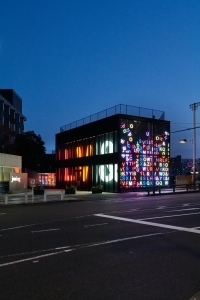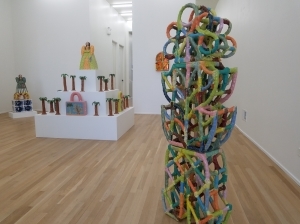Museum Debt Deprives Us of Our Future
Art museums across the United States are in a dire financial crisis. As a result of closures during the Covid-19 pandemic, many museums have undertaken drastic measures such as furloughing and laying off staff, selling artwork from their permanent collection, and scaling back programming and exhibitions in order to mitigate massive revenue losses. However, museums rarely acknowledge the extent to which industry financial practices, in particular the use of debt to finance capital projects, endanger their sustainability, especially during times of national and international economic crisis. Museums have increasingly relied on ambitious capital campaigns to fundraise and build new architectural feats to house their galleries in the hopes of drawing new local, national and international audiences. They finance hiring star architecture firms largely by soliciting gifts from foundations and philanthropists and by issuing debt in the form of bonds, which are purchased from the museum by creditors. Italian sociologist Maurizio Lazzarato describes how financial capitalism is driven by debt and that debt is a, “promise one must honor in order to contract more debt without ever being able to stop.” German filmmaker and writer Hito Steyerl similarly describes debt as a debilitating force that disrupts the economic viability of the present by consuming future income as debt in the present, depleting the future and destabilizing the present. When museums issue debt, they engage in speculation—borrowing against their projected future income to finance projects in the present—and blame market instability whenever future revenue falls short of expectations. Faced with financial insecurity, the organization often enacts austerity policies, laying off staff (as we’ve seen during the pandemic) and scaling back programming in order to continue paying interest to creditors.

Mandatory Credit: Photo by Paul Brown/Shutterstock (1950696z)
The Art Institute of Chicago, Illinois, America
Chicago, Illinois, America - Nov 2012
Many large art museums earn revenue through their endowment, generating income from financial investments. However, these investments are subject to the volatility of the financial market. John Zarobell, author of Art and the Global Economy, identifies two major shocks to endowments at American nonprofit museums: the first after the Enron crash in early 2002 and the more considerable one with the stock market decline in 2008. One of many museums deeply affected by the recession was the Art Institute of Chicago. When the Art Institute of Chicago started construction for the Renzo Piano-designed Modern Wing in 2005, the museum had not booked all pledges necessary to finance the project and bridged the funding gap by taking out short-term construction loans and then paying them back in 2009 by issuing $140 million in tax-free bonds through the Illinois Finance Authority. These bonds drove the institute’s total liabilities to $452 million, the highest ever. The Art Institute’s endowment took a major hit the same year the Modern Wing opened—losing a quarter of its value, or about $224 million—as financial markets plummeted. In order to weather the financial crisis, the museum implemented cost-cutting measures after opening the Modern Wing, including pay freezes, furloughs, and two rounds of layoffs that affected nearly 100 people. Ticket prices were also increased twice and are now mandatory rather than suggested. At the time, museum officials said the $294 million addition (which ballooned from the original $200 million budget) had nothing to do with the financial strain that it was experiencing. The Art Institute’s chief operating officer David Thurm claimed in 2013 that institution’s financial crisis was solely a result of the recession and not because of an institutional misjudgment of how much money was needed, despite a University of Chicago study that identified a shortfall in endowment money needed to operate the 264,000-square-foot Modern Wing.
The Art Institute’s public stance absolved museum leadership of culpability for its misjudged fundraising priorities, which disproportionately fell on museum employees as they were laid off to compensate for budget shortfalls and the public through increased ticket prices. The museum is animated and sustained largely by private philanthropists, who prefer to fund ambitious architectural projects, acquisitions of artwork, and costly special exhibitions while general operating costs garner much less support. The museum justifies the use of credit to finance expensive capital projects while waiting for donors to fulfill their multi-year pledges because it believes that expansion will bring a permanent increase in visitor attendance and therefore revenue. However, the illusory new audiences never materialized. After the completion of the Modern Wing in 2010, the museum saw a brief spike in attendance before it settled to historic levels. Servicing the museum’s debt costs millions a year and, as former Art Institute trustee Marshall Field V describes, institutions have to set aside more and more money to pay off their bonds as they come due. The museum takes on debt in order to finance infinite expansion, while willfully ignoring inevitable financial crises that will jeopardize the institution’s ability to pay back these debts.
Since the beginning of the Covid-19 pandemic, the Art Institute of Chicago has laid off more than 76 employees in response to projected revenue shortfalls in the millions of dollars. Despite these layoffs and extensive furloughs, the museum continued to fundraise for a $600 million capital campaign, a third of which was earmarked for architectural renovations by the Barcelona-based architectural firm Barozzi Veiga. The campaign was kickstarted in 2018 when museum trustees Janet and Craig Duchossois made a $50 million unrestricted gift to the museum and board Chairman Robert Levy and his wife, Diane v.S. Levy, made a gift of $20 million for operations and acquisitions. Museum leadership avoided questions from staff regarding the status of the capital, claiming that all fundraising efforts had been postponed until further notice and that the aims of the campaign would likely be adjusted. However, leadership never addressed whether or not these gifts, which are among the largest monetary gifts in the museum’s history, would be used to protect employee’s jobs and sustain the institution through a fiscal crisis. The museum refuses to change course, convinced that the capital project is ensuring the museum's sustainability, but this is simply not true. By speculating and betting on future income from dazzling new buildings and architectural spaces, the museum sacrifices the livelihood and institutional knowledge of its staff and programs for the fantasy of an imagined future. How do we challenge current institutional norms and force museum leadership to care more deeply for the well-being of their staff than for their creditors? We must first understand the extent to which financialization and debt destabilizes art institutions, siphoning money from the institution into the hands of private creditors while museum employees are forced to shoulder the consequences when this speculation falls short of expectations.

 日本語
日本語 English
English
